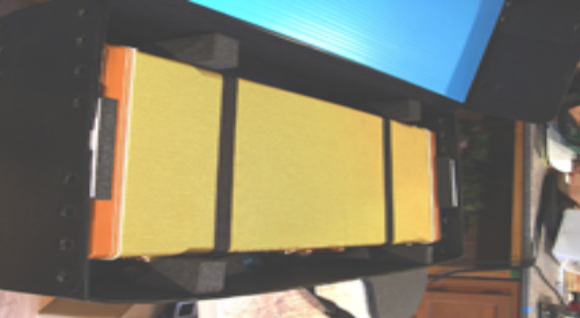For all the fun involved in being a musician and traveling for gigs, if you don't plan ahead a bit you can end up spending tons of money in excessive airline fees that can really take away from whatever you're getting paid and/or bite into your bank account. And that's if your guitar makes it there in one piece (google "united breaks guitars"). This issue can be a huge pain. Its can be expensive and you can risk breakage. Here are some helpful things I've found though (and most of these companies make keyboard and other style cases as well, not just guitar):
1. Flight cases.
There are lots of great options here. They tend to be ultra strong, and you can check them with luggage with a lot of confidence. The downside is that they tend to be pretty expensive and either heavy or bulky (which can be a pain to lug around once you arrive somewhere).
Some popular options are the Calton cases ($$$). They are incredibly sturdy though spendy (around $1000), take awhile to make and are heavy.
There are others, even more expensive, like accord cases (http://www.accordcase.com) if you'd like to spend thousands on a flight case (extremely light and strong). There are some cheaper as well, like Gator or SKB (I have an SKB case which is nice but not so much so that I'd trust to check it as baggage). However, in looking for a compromise (i.e. inexpensive and safe), I did come across a case made by a company called Case Extreme.
These are pretty great. The drawback of these is that they are huge. As in, imagine a giant rectangular box that you could probably fit in. HOWEVER, they are much much cheaper than many flight alternatives, very strong AND you can fit your own case, or even gig bag, inside of it so that once you arrive at your destination, ditch the giant box in your hotel room and just carry your own case around. Also, though they are big, they are relatively light. I have several of these cases and really like them.
2. Super gig bags
Here's a another route. Normal guitar cases are pretty large and its not always guaranteed you can get them on a plane as a carry-on in the first place. Also, typical cases don't always fit in the overhead bins and you are certainly taking a risk in checking them as things tend to get manhandled as checked luggage. One solution that many use is a case made by a brilliant company called Mono cases. Typical gig bags can be pretty cheap and, while these are gig bags, they are in a class of their own. Water proof, hip, very well designed for storage, ultra padded, built to protect specific parts of the guitar like the end pin and neck from breakage; they are not as protective as a flight case and you would not want to luggage check them but they allow you to get your guitar onto the flight itself as they are smaller than typical cases. I just bought the m80 after racking my brain over how to save money in traveling with gear.
So, really light, great storage, and they let you get your case on the plane more readily. Also, they are cheaper then any of the above options.
I've made national and international trips with the mono case and was able to get it on board in all legs of the trip. Make sure to board early, be polite and ask if there is available room in a closet. In some planes it will even fit in the overheard compartments. One time an attendant made me get a gate check tag but I just kept carrying it on board and asked politely if I could please check to see if it would fit on the plane. It worked.
3. Some things to think about in flying with instruments
- most airlines charge per bag. The flight case can push you into expensive categories when the first bag is $20, the second $30 something and the third $200!! Sometimes just a second bag gets you charged an extra $100. Think about it, with a suitcase, a pedal board and a flight case it easily costs +$200 for your luggage. Not great for your finances.
- airlines charge for weight too. Any bag over 50 pounds can incur huge fees. My case extreme with my electric was around 38 pounds, which was good. A mono case is considered a carry on. However,
- airlines also charge for dimensions (oversized). The electric case extreme case was underweight (good) but oversized (bad!) and cost me $200 EXTRA, just for that (only had that happen on one airline). Some clerks will waive it, many will not.
Currently I check one suitcase, a pedal board and carry on the guitar and laptop bag. That minimizes the fees decently. Another thing you can do is upgrade your seat on your flight. Don't do it too early as it can be expensive (unless you don't mind) but if you wait a day or two out, I've even done it the day of, you can board earlier and have a better chance of getting your guitar in a closet or overhead bin (not to mention extra legroom!).
Anyway, just some things to think about. Check the airline you are traveling. As a working musician it can be a pain to travel with instruments but if you do your homework you can find some relatively inexpensive solutions that will help save you a lot of money.


